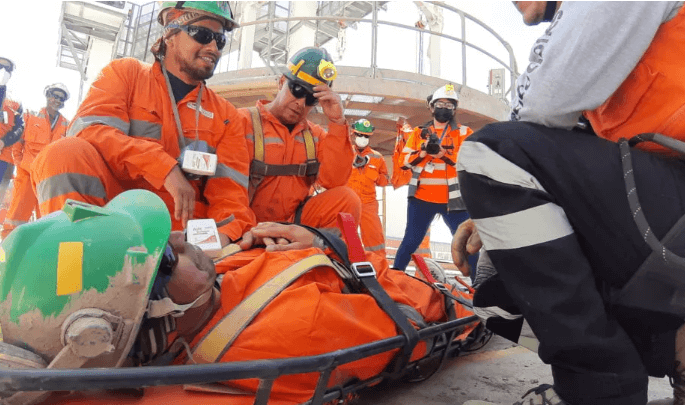What Are The Key Regulations To Follow When Working In Confined Spaces?

Working in confined spaces presents unique challenges and risks not found in typical working environments. These areas, such as storage tanks, silos, and underground tunnels, often have limited entry and exit points, making them particularly dangerous. Workers face risks like poor ventilation, exposure to hazardous gasses, and limited visibility. To protect workers, there are specific regulations that must be followed. Proper confined space training helps employees understand and navigate these risks safely.
Let’s explore some key regulations and best practices everyone should know when working in confined spaces.
1. Conducting a Thorough Risk Assessment
Before any work begins, the first step is to carry out a detailed risk assessment. This assessment identifies potential hazards, such as toxic gases, flammable substances, or oxygen deficiency. The confined space may also pose physical dangers like slippery surfaces or cramped quarters. Identifying these risks beforehand is critical to preventing accidents.
See also: What Are Emerging Trends in Interior Design?
Once the hazards have been identified, employers must communicate this information to the workers. Every worker should be aware of the risks they might face and the safety precautions in place. This way, they are better prepared to handle challenges that might arise. Having this detailed assessment ensures that workers enter the confined space with a full understanding of what they may encounter.
2. Implementing a Permit-to-Work System
Another important safety regulation for confined space entry is a permit-to-work system. This system ensures that no one enters a confined space without proper authorization and adequate safety measures in place. After reviewing the risk assessment, a permit is issued, ensuring that all necessary precautions are taken.
The permit outlines specific details such as who enters the confined space, the type of work being done, the potential hazards, and the safety measures that must be followed. This way, every step of the process is monitored and documented, helping to prevent any oversights that could lead to accidents.
As part of confined space training, workers are taught the significance of the permit-to-work system and how it plays a key role in keeping them safe.
3. Proper Ventilation and Continuous Air Monitoring
Confined spaces are notorious for poor air quality. Dangerous gases can accumulate without proper ventilation, or oxygen levels may drop to unsafe levels. Workers might be at risk of asphyxiation or poisoning if the atmosphere inside the space isn’t properly monitored and ventilated.
Installing adequate ventilation systems is critical. These systems bring in fresh air and remove harmful gases. In addition to ventilation, continuous air monitoring should be in place to check for hazardous gases and ensure that oxygen levels are within safe limits. If the air quality becomes unsafe, workers should exit immediately until conditions are corrected.
Workers trained through confined space training learn how to operate air monitoring devices and interpret the readings to ensure they remain safe.
4. Wearing Proper Personal Protective Equipment (PPE)
Personal protective equipment (PPE) is essential when working in confined spaces. The specific type of PPE needed will depend on the hazards identified during the risk assessment. Common PPE used in confined spaces includes helmets, gloves, protective clothing, and respiratory protection like masks or air-purifying respirators.
Self-contained breathing apparatuses (SCBA) may be required in cases where workers may be exposed to toxic gases or oxygen-deficient environments. This equipment provides workers with a safe oxygen supply while working in dangerous conditions.
However, PPE alone cannot guarantee safety unless workers are trained to use it properly. Regular equipment checks and training sessions ensure that all protective gear is in good working condition and used correctly.
5. Emergency Preparedness and Rescue Planning
One of the most critical safety regulations for confined space work is having a clear and actionable emergency plan. Accidents in confined spaces can be particularly dangerous, and swift, effective responses are essential to saving lives. Before any work begins, an emergency plan must be established, detailing how workers will be rescued if something goes wrong.
This plan should include the use of specialized rescue equipment, such as harnesses and retrieval systems, to quickly remove workers from a confined space. Rescue teams should be on standby and equipped with the necessary tools to respond immediately in an emergency.
Workers must also be trained to recognize when to evacuate the space and how to assist in a rescue situation. Confined space training includes emergency preparedness drills so workers can practice rescue operations and ensure everyone knows their role in an emergency.
6. Maintaining Clear Communication
Maintaining constant communication is crucial when working in confined spaces. Workers inside the space need to stay in regular contact with someone on the outside, ensuring that any changes in conditions or emergencies can be communicated immediately. Clear communication can prevent small issues from turning into major accidents, whether using radios, intercom systems, or pre-arranged signals.
In situations where verbal communication may not be possible, such as noisy environments, hand signals or alarms can ensure that workers stay connected with each other and with their supervisors outside the space.
7. Ongoing Training and Education
Safety regulations mean little without proper training. Workers must receive thorough confined space training to understand the risks, safety procedures, and equipment usage. This training should be comprehensive and include practical, hands-on sessions that allow workers to experience working in confined spaces.
Refresher courses should be provided regularly to ensure that workers stay current on safety practices and any changes in regulations. Ongoing training fosters a culture of safety, where workers remain vigilant and prepared for the unique challenges of confined space work.
Conclusion
Working in confined spaces is inherently risky, but following key regulations can significantly minimize these risks. From conducting thorough risk assessments to ensuring proper ventilation and wearing the right protective gear, each step in the process is essential to keeping workers safe. Confined space training is vital in preparing workers for the hazards they may face, equipping them with the skills and knowledge to handle even the most dangerous situations. By adhering to these safety practices, workers and employers can ensure that confined space work is conducted as safely as possible.



